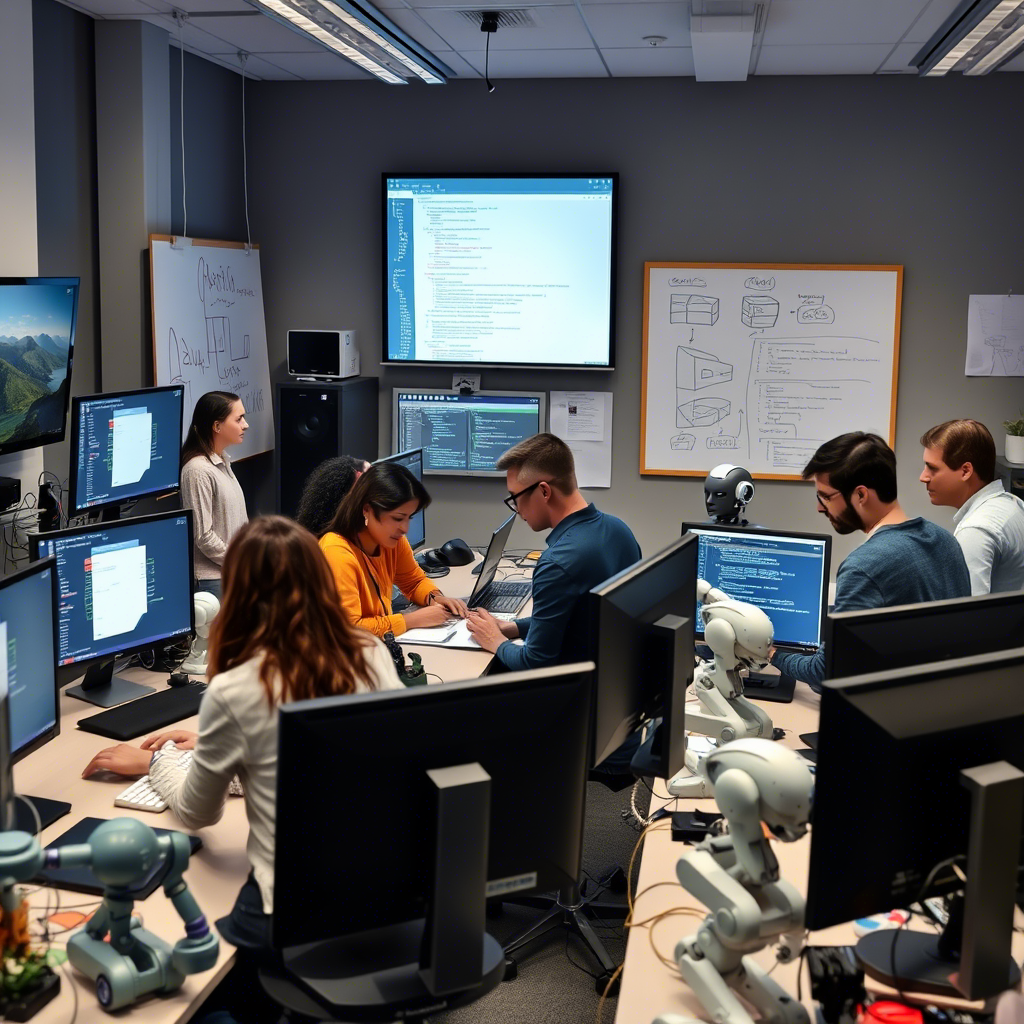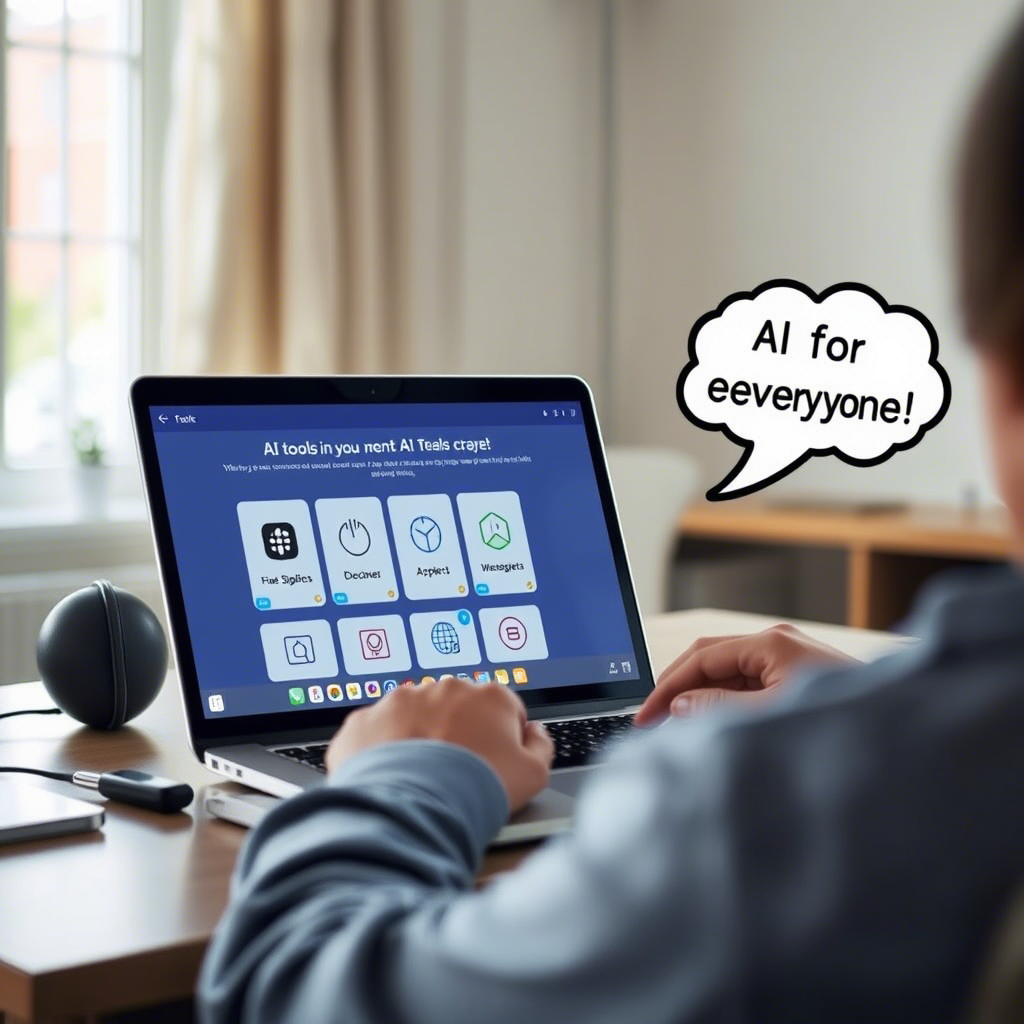Artificial Intelligence (AI) is no longer science fiction — it’s shaping the real world. From healthcare and finance to entertainment and transportation, AI is revolutionizing how industries operate. If you’re looking to break into this exciting field, you might be wondering where to start.
In this guide, we’ll walk you through a clear, actionable roadmap on how to learn AI , even if you’re starting from scratch. Whether you’re a student, a self-taught developer, or a professional looking to switch careers, this step-by-step plan will help you build the right foundation and advance your skills confidently.
Why Learn AI?
Before diving into the “how,” let’s briefly touch on the “why.” Here are just a few reasons why learning AI is a smart move:
- High demand : Companies across the globe are investing heavily in AI technologies.
- Lucrative salaries : AI engineers and machine learning specialists rank among the top-paying jobs.
- Future-proof career : As automation and data-driven decision-making become the norm, AI skills will only grow in importance.
- Creative applications : AI opens doors to innovation in art, music, robotics, and more.
Prerequisites: What You Need to Know Before Starting
While AI can seem intimidating at first, the good news is that with the right preparation, anyone can learn it. Here are the core prerequisites:
1. Mathematics
A solid understanding of math is essential for grasping AI concepts:
- Linear Algebra
- Calculus (especially derivatives and gradients)
- Probability and Statistics
- Basic Optimization
2. Programming Skills
Python is the most widely used programming language in AI and machine learning. Familiarize yourself with:
- Python syntax
- Libraries like NumPy, Pandas, and Matplotlib
- Jupyter Notebooks
No prior experience? No problem! Platforms like DataCamp offer beginner-friendly courses to get you up to speed.
Step-by-Step Roadmap to Learn AI
Step 1: Start with Machine Learning
Before jumping into advanced AI topics, begin with Machine Learning (ML) — the foundation of modern AI.
What to learn:
- Supervised vs. Unsupervised Learning
- Regression and Classification
- Evaluation metrics (Accuracy, Precision, Recall)
- Overfitting and Cross-validation
- Popular algorithms: Decision Trees, Random Forests, SVM, k-NN
Tools & Libraries: Scikit-learn, Pandas, NumPy
Project Idea: Predict housing prices using regression or classify emails as spam or not spam.
Step 2: Dive Into Deep Learning
Once comfortable with ML basics, move on to Deep Learning , which powers many of today’s breakthroughs in AI.
What to learn:
- Neural Networks: Layers, Activation Functions, Backpropagation
- Convolutional Neural Networks (CNNs)
- Recurrent Neural Networks (RNNs)
- Transfer Learning
- Introduction to frameworks like TensorFlow and PyTorch
Project Idea: Build an image classifier using CNNs or create a simple chatbot with RNNs.
Step 3: Explore Specialized Areas
After mastering the fundamentals, explore specialized AI domains based on your interests:
- Natural Language Processing (NLP): Chatbots, translation models, sentiment analysis
- Computer Vision: Object detection, facial recognition
- Reinforcement Learning: Game AI, robotics
- Generative AI: GANs, diffusion models, large language models (LLMs)
Each of these areas opens new opportunities and requires deeper knowledge in specific tools and architectures.
Best Resources to Learn AI
Here are some high-quality, beginner-friendly resources to support your learning journey:
Online Courses
- DataCamp – Introduction to Machine Learning in Python
- Coursera – Andrew Ng’s Machine Learning Course
- Fast.ai – Practical Deep Learning for Coders
- Udacity – Intro to Artificial Intelligence
Hands-On Practice
- Kaggle: Competitions, datasets, and notebooks
- Google Colab: Free GPU access for running deep learning experiments
- GitHub: Explore open-source projects and contribute
Books
- Hands-On Machine Learning with Scikit-Learn, Keras, and TensorFlow by Aurélien Géron
- Pattern Recognition and Machine Learning by Christopher Bishop
- Make Your Own Neural Network by Tariq Rashid
Practice Makes Perfect
The best way to truly understand AI is by doing . Work on personal projects, participate in competitions, and collaborate with others. Try to solve real-world problems using AI — this will not only deepen your understanding but also strengthen your portfolio.
Stay Updated and Keep Learning
AI evolves rapidly. New research papers, models, and techniques emerge almost daily. Follow:
- AI blogs (e.g., Towards Data Science, AI Section on Medium)
- Research labs (Google AI, Meta AI, OpenAI)
- Conferences (NeurIPS, ICML, CVPR)
Also, consider joining online communities such as Reddit’s r/learnmachinelearning or Discord groups focused on AI.
Final Thoughts
Learning AI is a journey — one that requires curiosity, persistence, and practice. But with the right path and resources, you can go from zero to building intelligent systems in a matter of months.
Whether your goal is to land a job in AI, enhance your current career, or simply explore a fascinating field, now is the perfect time to start.
Start small. Build often. And most importantly — keep learning.
Ready to take the next step? Check out DataCamp’s full range of AI and Machine Learning courses to get hands-on with real-world examples and guided projects.





